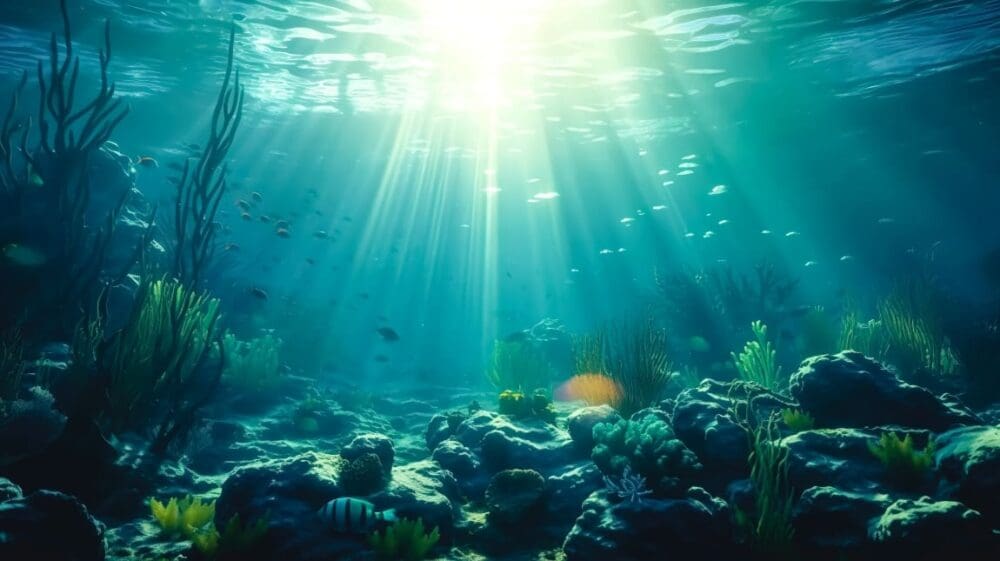A new study offers first-time insights into three emerging climate innovations to safeguard or increase the carbon naturally captured by ocean and coastal ecosystems: rapid interventions to save the Great Barrier Reef, satellite-tracked kelp beds in the deep ocean, and seagrass nurseries in the United Kingdom. The research, published in Environmental Science & Policy and co-authored by leading climate scholars at Boston University, Aarhus University, and the University of Sussex Business School, advances knowledge of understudied interventions in marine habitat protection to manage greenhouse gas emissions.
These climate change interventions, known as blue carbon, preserve or enhance marine and coastal ecosystems as valuable sources of carbon removal and storage. Currently, more than half of the world’s biological carbon is captured and stored by marine living organisms, which are threatened by acidification, temperature change, severe storms, and pollution. Previous studies have shown that improved management of these habitats could potentially arrest up to 10% of global emissions reductions needed to meet Paris Agreement targets.
Expanding knowledge of potential solutions
While blue carbon solutions could reduce emissions, generate revenue, and advance conservation policy, questions remain around their efficacy and potential effects on sociopolitical systems.
“Compared to the robust history of studying soil and forest systems for carbon management, harnessing marine ecosystems in the fight against climate change is relatively new and remains unproven,” said Benjamin Sovacool, the study’s lead author and director of the Boston University Institute for Global Sustainability, who is also affiliated with Aarhus University and the University of Sussex Business School. “As these emerging technologies are more widely deployed, it is essential that we develop a comprehensive understanding of their ties to cultural, political, and economic systems.”
Understanding each innovation
Drawing on 46 expert interviews, 38 site visits, and extensive document analysis, Sovacool and co-authors Chad M. Baum, Sean Low, and Livia Fritz of Aarhus University evaluated the social narratives, technology, and co-impacts of coral reef preservation in Australia, seagrass restoration in the United Kingdom, and seaweed cultivation and deep ocean storage in the United States.
Coral reef preservation in Australia supports blue carbon as coral tissues consume and capture carbon dioxide and bicarbonate. Through interviews with 23 local experts, the research team identified a narrative of crisis and collapse around saving the Great Barrier Reef as a national treasure. The narrative is also steeped in hope and moral urgency, motivating a willingness to explore a diversity of experimental and controversial new technologies — from genetic editing to cloud brightening. Positive co-impacts of reef preservation include more eco-tourism and better fisheries, while negative co-impacts include the potential for invasive species outbreaks.
Seagrass restoration captures carbon by directly growing biomass and trapping organic particles in the roots and sediments of seagrass meadows. The research team visited restoration efforts in the United Kingdom and conducted 12 interviews with seagrass experts from several universities, organizations, and the charity Project Seagrass. They discovered that narratives around restoration emphasize how unique, fragile, and distinct seagrass is, as well as its potential as an efficient and durable carbon store. Innovation in seagrass restoration requires broad, incremental advancements in knowledge around foundational marine science, botany, and data collection, which may make it relatively costlier and slower to implement. Potential benefits include improving water quality and cleanliness, promoting biodiversity and healthy fisheries, reversing acidification, and preventing coastal erosion.
Seaweed cultivation reduces carbon by increasing biomass through growing massive kelp beds in the deep ocean. Following 11 interviews, most of them with employees at a United States-based startup, the researchers identified a narrative of advancing technological innovation and generating profit grounded in a duty to save the world’s oceans. Innovation is deliberatively non-participatory, driven by a small group seeking to rapidly and massively scale operations. Seaweed cultivation could increase food production, water quality, and waste treatment, but faces a lack of social acceptance and may lead to uncontrolled growth.
Narratives, innovation styles, and co-impacts, plus contextual factors such as place, time, and cultural values, contribute to a given blue technology’s likelihood for success, the researchers conclude. The results of this study offer a glimpse into the future of blue carbon innovations, which the authors anticipate will be an increasingly relevant and popular area of scientific policy and discovery.
Originally published under Creative Commons by Boston University.
More information: Benjamin K. Sovacool, Chad M. Baum, Sean Low, Livia Fritz, ‘The sociotechnical dynamics of blue carbon management: Testing typologies of ideographs, innovation, and co-impacts for marine carbon removal’, Environmental Science & Policy, (2024; 155: 103730); DOI: 10.1016/j.envsci.2024.103730. Boston University – Press Release. Featured image credit: pvproductions | Freepik.com




